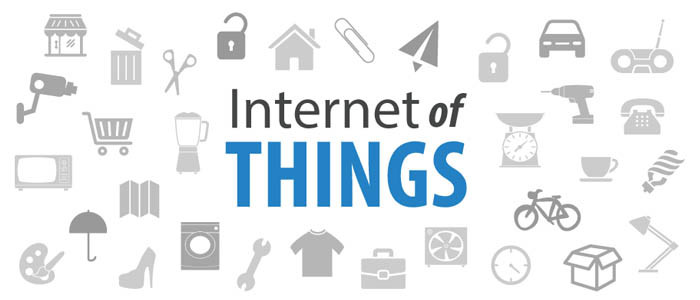Imagine a world where your toaster and coffee maker know what time you wake up in the morning and your toaster starts warming up, while your coffee maker starts brewing your coffee before you come downstairs. As part of your wardrobe, you put on a shirt that sends vital information to your doctor if you suddenly become ill. Your car knows exactly what temperature you like the environmental controls set to, and your tablet starts downloading news stories based on what you read the day before.
It sounds like the distant future, but it is all happening right now. It is called the Internet of Things (IoT), and it could change the way you live and work. Smart cities are already in the planning stages that reduce vehicle emissions, are much more energy efficient, and handle traffic in such a way as to reduce traffic jams and pedestrian injuries. It all sounds like a dream, but there are problems to overcome as we head into the future of IoT.
What Is IoT?
In a perfect world, IoT means that every device that runs on some sort of power is connected to the Internet, or connected directly to each other. As you can imagine, there are issues with getting some items connected to the Internet, and there is also problems justifying connecting electric toothbrushes to a central server.
As these devices go through their daily activities, they collect information that can be used in a variety of ways. As our example in the opening paragraph suggested, devices and wearable technology would be able to anticipate a person’s needs and transmit critical information on its own. The data stored can be used to make a taxi cab fleet more fuel efficient, and it can be used as evidence in a personal injury lawsuit involving a car accident.
Commercial Adaptation Of IoT
Small and large businesses have started to create IoT strategies designed to connect all of their devices to a central storage and analysis point. There are two ways businesses can implement an IoT strategy; either buy all new equipment that is already IoT enabled, or start enabling equipment one piece at a time. Obviously, the more cost effective route is to enable devices one piece at a time, but that does not make it the easiest approach.
One of the most significant problems companies have with an IoT implementation is connecting legacy devices to the Internet. Large mainframes can be connected to the Internet, but what about the company trucks? It takes a significant amount of planning to outfit any size organization with an IoT network.
The payoff for installing an IoT system is significant. Companies can monitor the condition and activities of their vehicles in detail and develop a number of fuel-saving measures. Employee productivity can be easily monitored, and that opens up the door for developing more productive methods. Companies would be able to put worker’s compensation fraud to an end, and corporate attorneys would have much more information to use in defense of the company in any kind of lawsuit.
Many industries will show a massive growth toward IoT within the next several years.

Is IoT Vulnerable?
The vulnerabilities in an IoT system come from the significant number of Internet connections they create. When a car sends back information about its fuel usage, it is also opens up a connection on the Internet that hackers can use to access the company network. Even your personal information is not safe when your toaster retrieves your favorite toast settings from a central server and uses that information to make your morning a little better.
Compliance Issues
Implementation of IoT networks has been going on in the corporate world long enough for government agencies to start developing laws and guidelines regarding the creation and maintenance of an IoT system. But with so much information being transmitted from so many devices, there have been plenty of concerns raised about compliance with security standards.
The protection of data has been critical, and standards such as HIPAA for storing health care data and PCI for protecting credit card information have been created to make sure that the private data of customers and patients stays safe. But with the IoT, maintaining compliance with these laws is not easy. Most of these government agencies have issued detailed ways to make sure that data is transmitted over an IoT system safely, but the laws keep changing as more and more devices are placed online.
Protecting Your Data
Some of the factors that make the IoT possible is the massive expansion of WiFi service, the dramatic drop in technology costs, and the rapid rate at which technology is being adopted around the world. But at the heart of any IoT system is a reliable and secure cloud storage solution.
Global IT has dedicated servers placed in a secure location that you can use to safely store all of your IoT data. The amount of data you will collect with a IoT system is well beyond what your company is used to handling. Instead of taking chances, it is best to rely on the experts and state-of-the-art equipment used by Global IT to protect your critical data.
Resources:
http://www.forbes.com/sites/jacobmorgan/2014/05/13/simple-explanation-internet-things-that-anyone-can-understand/#5a9a68386828
http://www.forbes.com/sites/janakirammsv/2016/08/22/10-steps-to-implementing-a-successful-enterprise-iot-strategy/2/#7b413f221fcd
https://www.thingworx.com/blog/iot-helps-business-regulatory-compliance/
http://www.business.com/technology/internet-of-things-security-compliance-risks-and-opportunities/
http://www.businessinsider.com/the-enterprise-internet-of-things-market-2015-7
Image Sources: aquaticinformatics.com and businessinsider.com

